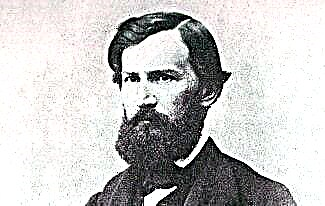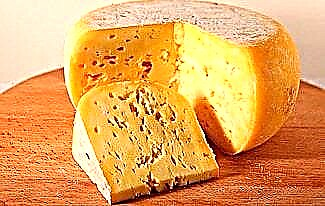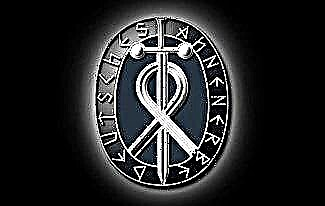To the southwest of Minsk there is a small town of Nesvizh, which attracts tourists from all over Belarus and neighboring countries every day. Historical and architectural monuments located in a small area of the city are of interest. One of the sights is of great cultural value - the Nesvizh Castle, in the status of a museum-reserve, has been protected by UNESCO since 2006.
History of Nesvizh Castle
North of the modern castle, where the Old Park is now located, by the beginning of the 16th century there was a wooden estate. It was the castle of the Kishka clan, whose representatives ruled Nesvizh. The Radziwills who came to power rebuilt and strengthened the house. But the next owner, Nikolay Radziwill (Orphan), decided to build an impregnable stone residence - a fortress that would give protection to its owner and his subjects from numerous enemies.
The date of foundation of the stone Nesvizh castle is 1583. The name of the architect is called only presumably, perhaps it was the Italian G. Bernardoni, but the description of his biography introduces confusion into this assumption.
A large rectangular stone castle with dimensions of 120x170 m was built on the bank of the Ushi River.To protect the castle, the usual methods for that time were used: earthen ramparts were poured along the perimeter, which turned into deep ditches up to 4 m deep and 22 m wide. they did not crumble, they were reinforced with masonry 2 m thick. Since the Nesvizh castle was built on the high bank of the Usha and its water level was below the ditches, the creation of a dam, dam and ponds was required to fill them. By raising the water level, the engineers were able to direct it into the moats, which gave the castle additional protection.
Weapons for a possible defense were imported from other fortresses or cast directly in the castle. So, during the Russian-Polish war in the 17th century, the fortress already had 28 guns of various calibers, which helped to withstand repeated sieges of the Russian army.
The defense against the Swedes in the Northern War in March 1706 ended just as well, but still in May the already tired garrison and peaceful townspeople asked the commandant of the fortress to surrender. In two weeks the Swedes ravaged the city and the castle, took away and drowned most of the guns and other weapons. According to one of the legends, cold weapons or firearms may still lie at the bottom of the ditch.

At the end of the 18th century, the castle became the property of the Russian Empire, but the Radziwills were allowed to live there further. During the war of 1812, Dominik Radziwill sided with the French, he provided the Nesvizh castle to house the headquarters of Jerome Bonaparte (Napoleon's brother). During the flight of the French army, the manager of the castle, by order of the owner, hid all the treasures, but under torture he revealed the secret - he gave the place of their storage to the Russian general Tuchkov and Colonel Knorring. Today, parts of the Radziwills' treasures are exhibited in Belarusian, Ukrainian and Russian museums, but it is believed that a significant portion of the treasures were lost, and their location is still unknown.
In 1860, the confiscated Nesvizh castle was returned to the Prussian general Wilhelm Radziwill. The new owner expanded the castle, transformed it into a luxurious palace, laid out huge parks with a total area of 90 hectares, which delight everyone who comes here with their coolness and beauty. During World War II, all the representatives of the Radziwill family who were hiding in the castle were taken to Moscow, although they were later released to Italy and England. During the German occupation, the headquarters were again located in the huge empty castle, this time - the headquarters of the "tank" General Guderian.
After the end of the war in the building of the castle, the authorities of Belarus founded the sanatorium "Nesvizh", which was subordinate to the NKVD (KGB). Since the collapse of the USSR, restoration work began in the Nesvizh Castle to establish a museum in it. Its doors were opened for mass visits in 2012.
Museum "Nesvizh Castle"
In order to stroll around the large territory of the palace and park complex without haste and fuss, you should come to Nesvizh on weekdays. In this case, sightseeing will be more careful. On weekends, especially in the warm season, there is a large influx of tourists, so there is often a queue at the ticket office at the entrance.
Overcrowding is prohibited in the courtyard of the castle and inside the premises and rooms, therefore, to serve everyone, the time of excursions is reduced to 1–1.5 hours. At the entrance, for a fee, they offer an "audio guide" service, including in foreign languages. In this case, you can walk around the castle on your own without joining excursion groups. On sunny days, walks in the parks are especially pleasant, where alleys of trees, beautiful shrubs, and flower beds are planted. The most beautiful parks are in spring and autumn.
We advise you to read about Dracula's castle.
In addition to the services traditional for museums, the Nesvizh Castle offers unusual events:
- Wedding ceremonies.
- Event "Proposal of a hand", "Birthday".
- Wedding photo and video filming.
- Costumed photo sessions.
- Theatrical excursions.
- Historical quests on different topics for children and adults.
- Museum lectures and school lessons.
- Rent of a conference room.
- Restaurant rent for banquets.

A total of 30 exhibition halls are open to the public in the museum, each of which is unique, has its own name, close to the original design. Always during excursions, guides tell the legends of the castle, for example, about Black Lady - the poisoned lover of the Polish king. The supposedly restless soul of Barbara Radziwill lives in the castle and appears in front of people as an omen of trouble.
In addition to daily excursions, knights' tournaments, colorful festivals, carnivals and concerts are periodically held in the castle. Tourists who come for several days stay for the night both in the city itself and in the hotel "Palace" on the territory of the museum complex. The small cozy hotel can accommodate 48 guests.
How to get there, opening hours, ticket prices
The easiest way to get to Nesvizh Castle on your own is by car. Minsk and Brest are connected by the M1 (E30) highway, you need to move along it. The distance from Minsk to Nesvizh is 120 km, from Brest to Nesvizh - 250 km. Seeing the pointer to the P11 highway, you need to turn onto it. You can also get to the museum from Minsk by regular bus from bus stations or by taxi. Another option is the Minsk train, but in this case at the station. Gorodeya will have to change by taxi or bus to Nesvizh. The official address of the museum administration is Nesvizh, Leninskaya street, 19.
The reserve museum is open for visits all year round. In the warm season, from 10 am to 7 pm, in the cold season, the schedule shifts forward by 1 hour. In 2017, the cost of tickets in terms of Belarusian rubles to Russian rubles is approximately:
- Palace ensemble: adults - 420 rubles, pupils and students - 210 rubles. (weekend tickets are 30 rubles more expensive).
- Exposition in the Town Hall: adults - 90 rubles, pupils and students - 45 rubles.
- Audio guide and photo in historical costume - 90 rubles.
- Museum lessons for a group of up to 25 people - 400–500 rubles.









